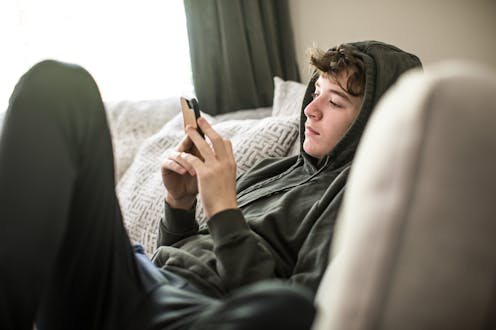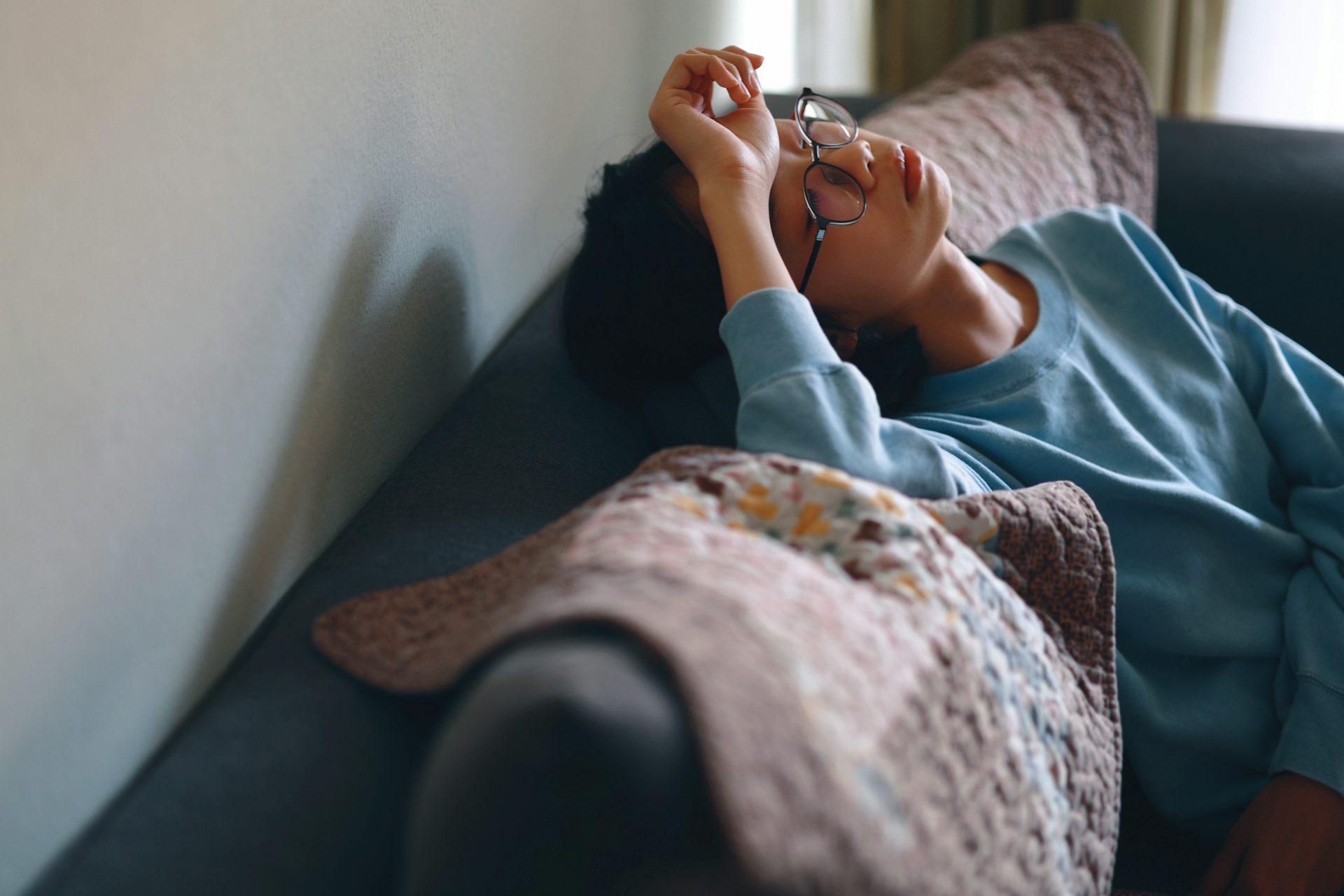How much time do kids spend on devices – playing games, watching videos, texting and using the phone
Up to 50% of US teens feel they are addicted to their devices. But help is out there.


Curious Kids is a series for children of all ages. If you have a question you’d like an expert to answer, send it to curiouskidsus@theconversation.com.
How many hours does the average American spend on devices each year? – Maxwell P., age 10
Think about your favorite devices – your smartphone, laptop, tablet, computer or console – the things you use to play cool games, watch hilarious videos and connect and chat with friends.
Many young people spend a lot of free time looking at them. Turns out that teens spend an average of 8½ hours on screens per day, and tweens – that’s ages 8 to 12 – are not far behind, at 5½ hours daily.
Keep in mind those numbers are for only social media, gaming and texting. They do not include the time that kids used screens for schoolwork or homework.
What’s more, much of the time taken up by social media and texting is apparently not even enjoyable, much less productive. A 2017 study of teens ages 13 to 18 suggests they spend most of those hours on the phone in their bedroom, alone and distressed.
These lonely feelings correlate with the rise in the use of digital media. In 2022, 95% of teens had smartphones compared with only 23% in 2011. And 46% of today’s teens say they use the internet almost constantly, compared with 24% of teenagers who said the same in 2014 and 2015.
Our team of psychiatrists who treat young people with digital addiction have many patients who spend over 40 hours per week on screens – and some, up to 80 hours.
Think about it: If you spend “just” an average of 50 hours per week on devices from ages 13 to 18 – the total time you will spend on screens equates to more than 12 years of school!
Find the right balance
All this is not to say that everything about devices is bad. In this digital age, people embark on exciting journeys through the screens of their devices. Sometimes, screens are the windows to a magical adventure.
But too much screen time can lead to problems. As human beings, we function best when we’re in a state of balance. That happens when we eat well, exercise regularly and get enough sleep.
But spending too much time using digital devices can cause changes in the way you think and behave. Many teens and tweens developed the “fear of missing out” – known as FOMO. And one study shows some people develop nomophobia, which is the fear of being without your phone, or feeling anxious when you can’t use it.
Moreover, digital addiction in high school may predict serious depression, anxiety and sleep disruption in college.
Rates of depression and anxiety are skyrocketing among college students. The fear of missing out is pervasive, resulting in sleep disruption; too many college students sleep with smartphones turned on and near their bed – and wake up to respond to texts and notifications during the night. Sleep disruption itself is a core symptom of both depression and anxiety.
How to avoid device addiction
A 2016 poll indicated that half of teens felt they were addicted to their mobile devices.
Getting hooked on screens means missing out on healthy activities. To achieve a better balance, some experts recommend the following: Turn off all screens during family meals and outings. Don’t complain when your parents use parental controls. And turn off all the screens in your bedroom 30 to 60 minutes before bedtime – this step will improve sleep.
You may be a “screen addict” if you:
- Feel uneasy or grumpy when you can’t use your device.
- Don’t take breaks while spending hours on your device.
- Ignore other fun activities you enjoy, like going outside or reading a book.
- Have trouble sleeping, or falling asleep, because your screen time is too close to bedtime.
- Experience eye, lower back and neck strain.
- Struggle with weight gain or obesity because you’re inactive.
- Have difficulty with real-life, face-to-face social interactions.
If you notice these signs, do not dismiss them. But also realize you’re not alone and help is out there. You can find balance again.
A healthy approach
Exercise – riding a bike, playing sports, lifting weights or going for a jog or walk – keeps your brain healthy and protects it against depression and anxiety, as well as limiting your screen time.
Another way to be happier and healthier is to spend time with people – face to face, not via a screen. Seeing people live and in person is the best way to bond with others, and it may be even better for life span than exercise.
Creative hobbies are good, too. Cooking, playing an instrument, dancing, any arts and crafts, and thousands of other fun things make people happier and more creative. What’s more, hobbies make you well rounded and more attractive to others – which leads to more face-to-face interactions.
It’s also critical for parents to practice healthy screen habits. But about one-third of adults say they use screens “constantly.” This is not exactly a great example for kids; when adults take responsibility to minimize their own screen time, the whole family gets better.
Our research team used magnetic resonance imaging, also known as MRI, to scan the brains of teens who had digital addiction. We found impairment in the brain’s decision-making, processing and reward centers. But after a digital fast – meaning the addicted teens unplugged for two weeks – those brain abnormalities reversed, and the damage was undone.
Our findings also showed that kids with a desire to overcome digital addiction did better with a digital fast than those who were less willing or who denied their addiction.
A balanced lifestyle in the digital age is all about finding joy in screenless activities – being active, connecting with others and exploring your offline interests.
Hello, curious kids! Do you have a question you’d like an expert to answer? Ask an adult to send your question to CuriousKidsUS@theconversation.com. Please tell us your name, age and the city where you live.
And since curiosity has no age limit – adults, let us know what you’re wondering, too. We won’t be able to answer every question, but we will do our best.
David Rosenberg receives funding from the Children’s Hospital of Michigan Foundation, Detroit, MI, and a grant from the National Institute of Mental Health (R01MH59299). This work was also supported in part by the State of Michigan Lycaki Young Fund and the Detroit Wayne Integrated Health Network.
Natalia Szura does not work for, consult, own shares in or receive funding from any company or organization that would benefit from this article, and has disclosed no relevant affiliations beyond their academic appointment.
Read These Next
Winter storms blanket the East, while the U.S. West is wondering: Where’s the snow?
Here’s what snow forecasters are watching, and why skiers and other snow lovers shouldn’t lose hope.
Rural high school students are more likely than city kids to get their diplomas, but they remain les
1 in 5 students in the US are living in rural areas.
Why do people get headaches and migraines? A child neurologist explains the science of head pain and
Many different types of stress can trigger a headache. Luckily, there are treatments that can help stop…





